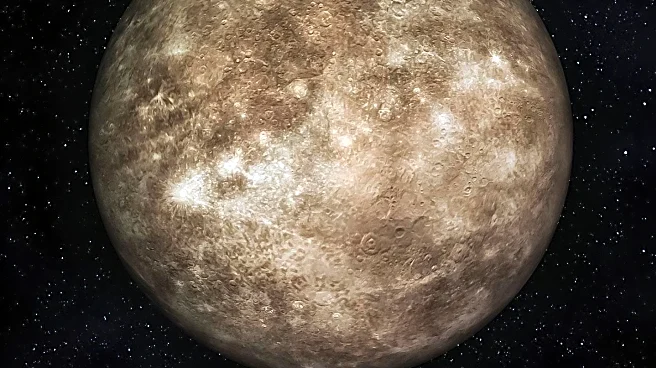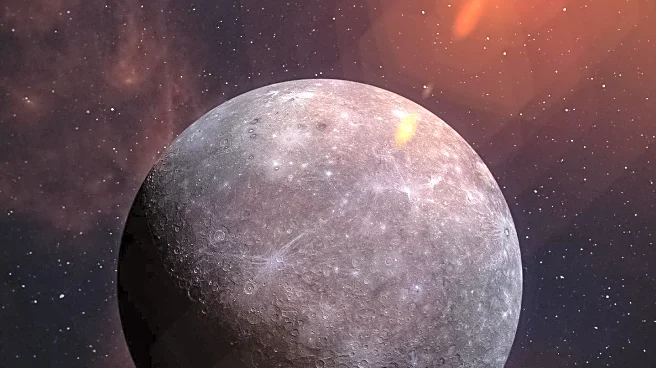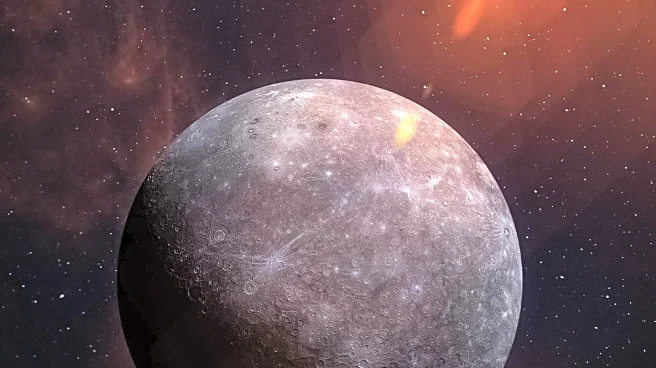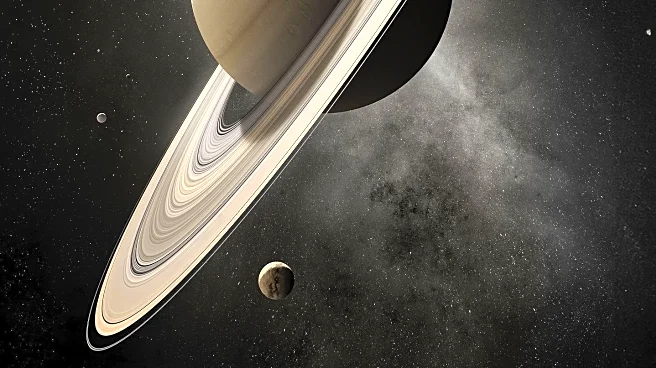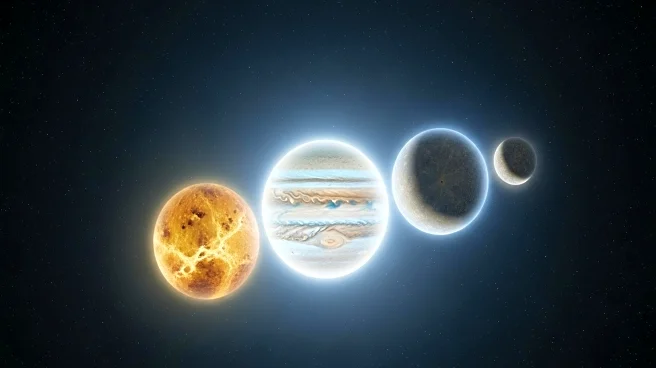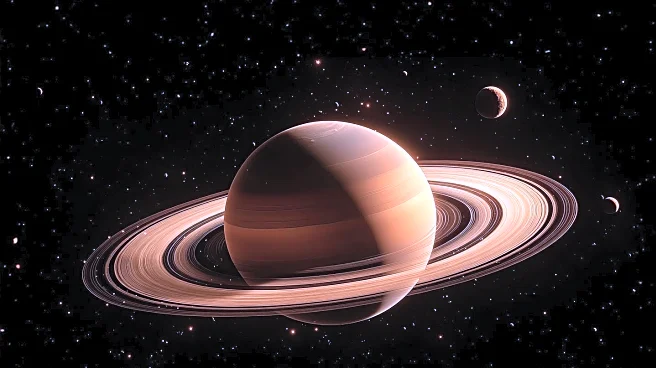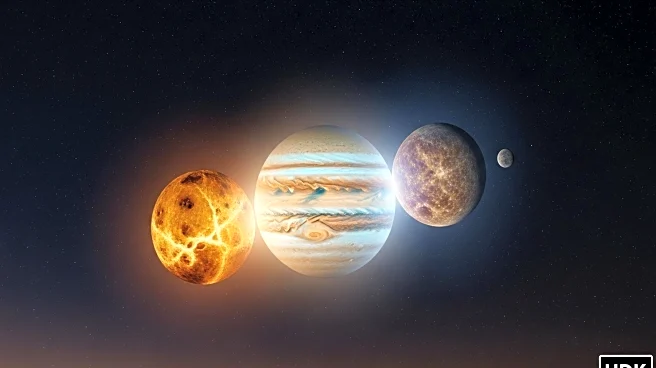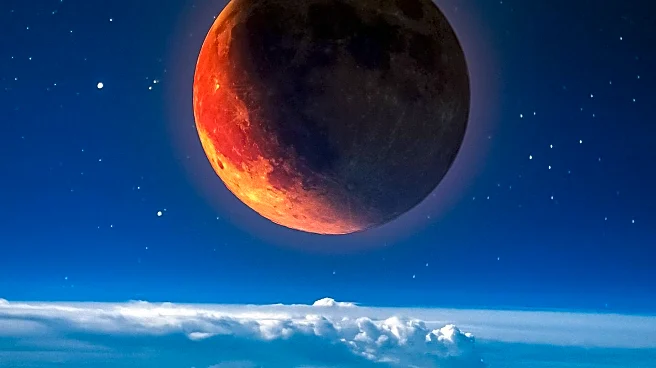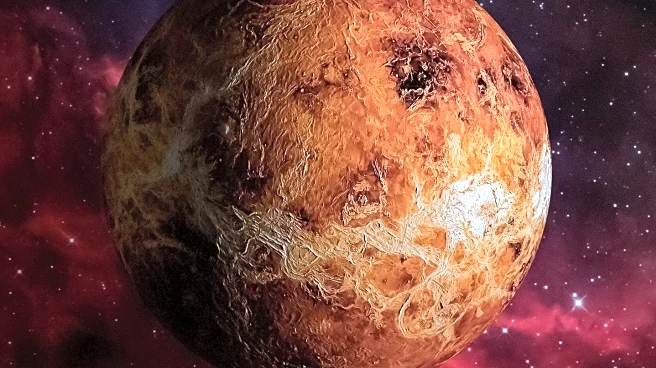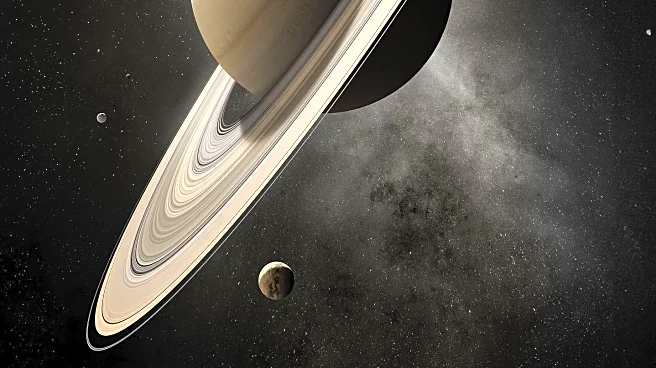What's Happening?
On September 2, 2025, Mercury will make a rare appearance alongside the bright star Regulus in the constellation Leo. This event will occur just before dawn, with Mercury appearing as a bright morning star near the horizon. Venus and Jupiter will also be visible, forming a diagonal line of planets. Mercury's proximity to the sun makes it challenging to observe, but it will be visible briefly before sunrise. After this event, Mercury will become increasingly difficult to spot as it approaches its superior solar conjunction on September 13, when it will pass on the opposite side of the sun relative to Earth.
Why It's Important?
This celestial event provides a unique opportunity for amateur astronomers and stargazers to observe Mercury, which is often elusive due to its proximity to the sun. The alignment with Regulus adds interest for those studying constellations and planetary movements. Observing such events can enhance public interest in astronomy and encourage educational activities related to space science. The visibility of multiple planets in the sky simultaneously can also foster appreciation for the complexity and beauty of our solar system.
What's Next?
Following its appearance with Regulus, Mercury will transition to being visible as a bright evening star in the months after its solar conjunction. Stargazers can look forward to observing Mercury in the western sky after sunset. Astronomy clubs and observatories may organize viewing events to capitalize on this opportunity, providing educational resources and guided observations. The event also sets the stage for future celestial alignments and encourages ongoing interest in planetary observation.
Beyond the Headlines
The fleeting visibility of Mercury highlights the challenges of observing planets close to the sun and underscores the importance of timing and location in astronomical observations. This event can inspire discussions about the dynamics of planetary orbits and the role of celestial mechanics in shaping our view of the night sky. It also serves as a reminder of the interconnectedness of celestial bodies and the intricate dance of planets within our solar system.
